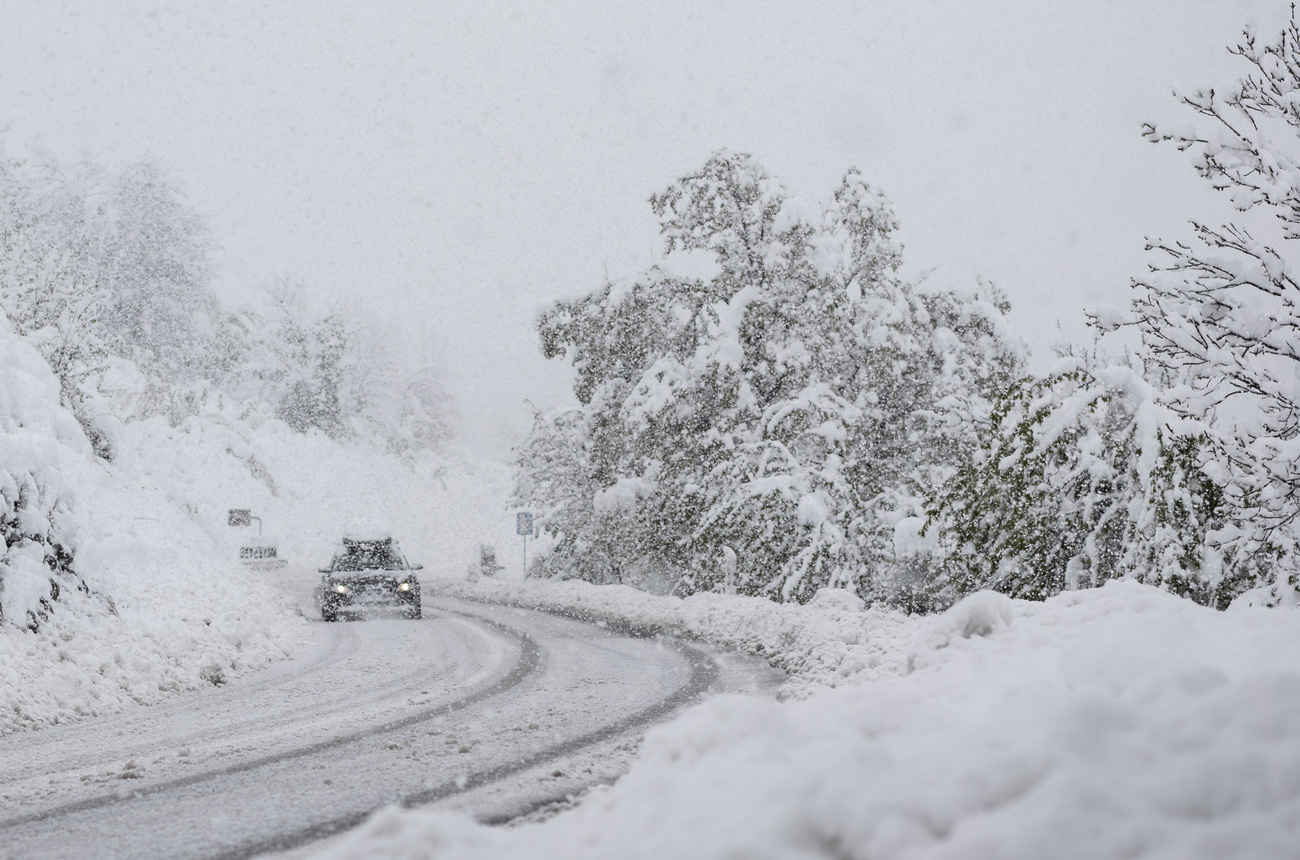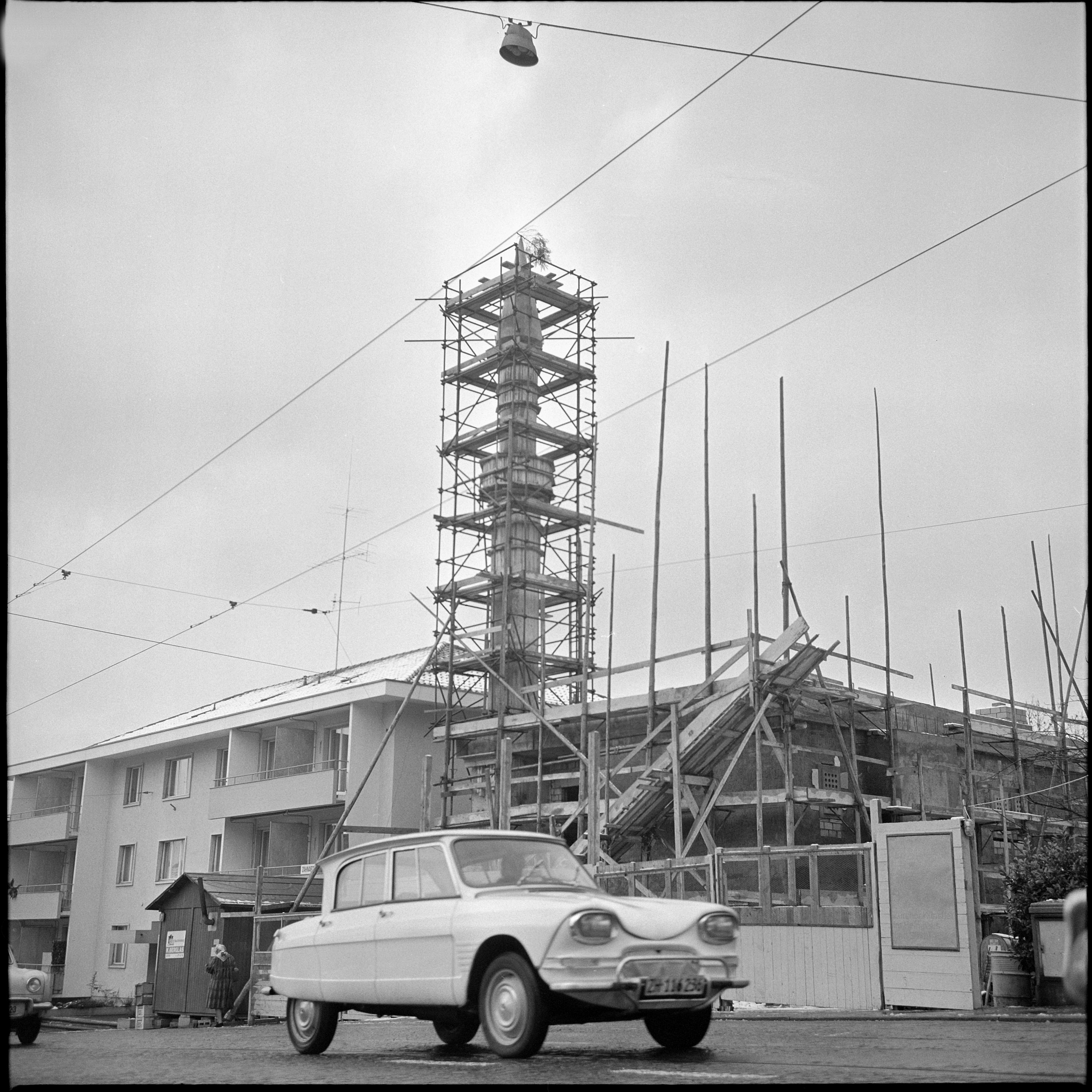Crucifixes in classrooms fuel controversy

The dispute over crucifixes in schools has once again come to the fore with the firing of a schoolteacher in canton Valais who took them down.
The Federal Court ruled in 1990 that crucifixes were contrary to religious neutrality but a former court president is calling for more tolerance on the issue.
Authorities of the mainly Catholic canton in southwestern Switzerland seem to be in a dilemma over the firing of the teacher, who, citing the Federal Court decision, defended his right not to have crucifixes in the rooms in which he taught.
In the letter of dismissal to the man, who taught in the village of Stalden, the local school authorities justified their move by claiming that mutual trust had been broken “by various incidents”.
The Federal Court had decided that hanging crucifixes in primary school classes in the commune of Cadro, canton Ticino, was contrary to the regulations regarding religious neutrality in schools.
The teacher dismissed in Valais, who is also president of the cantonal section of the Freethinkers’ Association of Switzerland, feels his case is similar to the Cadro one.
The school authorities and the mayor of Stalden, Egon Furrer, do not agree. Furrer says the decision is based on canton Valais public education legislation.
This stipulates that education should prepare pupils for their duties “as human beings and Christians”.
Some inconsistency
However, the canton is well aware that there is some inconsistency.
The legislation also states: “Cantonal employees – and teachers in particular – are in principle duty bound to show a certain restraint. In their jobs they must abstain from actions that could interfere with the freedom of belief of others.”
In another recent case, primary school authorities in Triengen, canton Lucerne, gave in to pressure from a father who reminded them of the 1990 Federal Court decision; as a result they took down two crosses.
“The Federal Court realised that those who practise a different faith or those without a religion may demand that a cross with a body [of Christ] be removed,” a former head of the court, Giusep Nay, told swissinfo.ch.
Legal principle
“I clearly take the view one should apply the legal principle: if there are no claimants, there is no judge. Tolerance is needed on such sensitive issues as people with different religions living alongside each other.”
Nay said solutions were needed for concrete situations in different places. “When there is a complaint, the Federal Court ruling should apply. That means that the crucifix has to be taken down where the children go to school.”
The former judge does not know all the crucifix cases at first hand. “But I suspect that the discussions about banning headscarves, burkas and minarets only encourage those people who do not want the crucifix.
“They say that if the authorities are not prepared to tolerate Muslim religious symbols they must also logically ban Christian symbols,” he added.
The European Court of Human Rights decided that a teacher from Geneva was not permitted to wear a headscarf at school because the schools in the western Swiss city were quite clearly neutral on the issue of religious denomination.
Nay made the point that teachers and school premises represented the school as an institution, whereas, for example, a pupil wearing a headscarf in the classroom was not representing the school.
He does not believe though that the Federal Court decision, in which he took no part, is necessarily the best solution. “I would rather make the case that tolerance can and must be expected. Without tolerance, multi-religious and multi-cultural societies do not work.”
The ruling dealt explicitly with the issue of crucifixes in primary school classrooms and did not apply to administrative buildings or courts.
In his assessment of the 1990 decision, lawyer Simon Pesendorfer analysed the reasons behind it in a dissertation entitled: State Acceptance of Religious Rites and Symbols.
He argued that religious neutrality was particularly important at primary schools because they were mandatory for all children.
Those with other religious beliefs would in this way be prevented from being considered outsiders.
Disputes about crucifixes have also flared up abroad, for example in Italy.
The European Court of Human Rights ruled in November 2009 that obligatory crucifixes in school classrooms were an infringement of religious freedom.
However, Italy made a demand in February to the court’s Grand Chamber for a re-assessment of the case; this was approved.
(Adapted from German by Robert Brookes)

In compliance with the JTI standards
More: SWI swissinfo.ch certified by the Journalism Trust Initiative













You can find an overview of ongoing debates with our journalists here . Please join us!
If you want to start a conversation about a topic raised in this article or want to report factual errors, email us at english@swissinfo.ch.